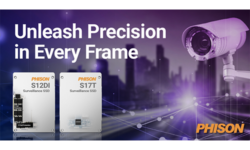Study: Educational, Healthcare Facilities Increasingly Rely on Video Surveillance
Campus Safety’s 2021 Video Surveillance Survey reveals insights from campus end-users about their wants, challenges and more.

(Image: alice-photo/stock.adobe.com)
According to SSI sister publication Campus Safety‘s 2021 Video Surveillance Deep Dive, video surveillance continues to be incredibly popular with K-12, college and hospital security professionals.
A whopping 94% of all respondents to this year’s survey say they have video surveillance systems deployed, with another 4% saying they don’t but plan on buying security cameras in the next two years.
Additionally, most say they are quite pleased with the systems they’ve installed. Nearly two-thirds of all respondents rate the coverage and quality of their video surveillance technologies as “excellent” or “good.”
- “We consistently use CCTV to solve cases. Outside law enforcement agencies frequently ask for our CCTV to assist in their investigations as well,” said one respondent.
- “We have identified at least one issue, concern or crime every day since we turned the system on,” said another.
- “Many reported cases related to thefts, fights, protests, mishaps etc. have been solved using our surveillance video recordings in investigations,” said a third.
The incidents and situations that are investigated using security cameras run the gamut, including the unauthorized shooting of TikTok videos on campus, vandalism, bike accidents, fights, falling trees, thefts, cars using parking lots to “drift” and more.
K-12 respondents were the most effusive about their video surveillance system coverage and quality, with 71% saying their coverage and 68% saying their quality is excellent or good. Respondents from higher education were the least likely to rate their coverage and quality as excellent or good… 51% and 57% respectively.
All of these positive experiences have prompted educational facilities and healthcare organizations to make even more investments in security camera systems in the past two years.
Campuses Continue to Acquire, Upgrade Systems
Like respondents to this year’s Campus Safety Access Control and Lockdown Survey, a lot more respondents to this year’s Video Surveillance Survey say they’ve purchased equipment over the past two years and/or are considering buying more in the next two years.
Protection pros in healthcare who took part in this year’s survey are the most likely to be in the market for new or more video surveillance (73%), while 59% of respondents from higher ed say they plan on making purchases in the next two years. K-12 respondents were the least likely to say they will be buying. However, that percentage is still very high at 43%.
The percentage of respondents who have purchased body-worn cameras has more than doubled compared to two years ago when asked about this technology in the 2019 Campus Safety Video Surveillance Survey. Nearly a third of all survey participants (30%) say they’ve purchased this type of equipment in the past two years, compared to 2019 when only 14% said they had purchased on-body cams over the past three years.
More than one in four respondents (27%) say they are considering buying this equipment in the next two years. That’s 13 percentage points more than two years ago. Only 46% of survey takers say they are not considering purchasing body-worn cameras, which is a 16-point drop from 2019 when 62% said they weren’t considering purchasing this type of equipment in the next three years.
There has also been a lot more purchasing of video analytics compared to 2019: 30% of respondents have bought this type of solution over the past two years, compared to only 18% two years ago. Artificial intelligence (AI) has also gained in popularity. More than one in five respondents (21%) have purchased AI in the past two years.
In 2019, only 6% had purchased AI over the past three years. Additionally, license plate recognition (LPR) has experienced a spike in demand over the past two years: 29% of survey takers say they’ve purchased LPR recently, compared to only 14% in 2019.
This year, we also asked if survey participants had bought or were interested in buying facial recognition, Cloud video surveillance, gunshot detection and camera technology augmented with audio technology. More than one in five respondents (22%) have purchased facial recognition in the past two years, while 27% say they are considering acquiring this solution in the next two years.
Cloud video surveillance is also popular, with 28% of survey takers having made a purchase in the past two years and 29% considering buying in the next two years. Respondents also showed quite a bit of interest in audio technology that augments security cameras: 25% have already bought this technology, while another 17% are considering it.
Gunshot detection was purchased recently by 12% of respondents, with 15% considering a purchase in the next two years.
Tech, Policy and Procedure Challenges Remain Fairly Constant
For the most part, the level of struggles with regards to maintenance, technology expertise, old cameras, camera management and finding an integrator have remained remarkably consistent since the last time we surveyed on these topics back in 2019.
More than one in four respondents (26%) say video surveillance system maintenance is extremely challenging or very challenging, and more than one in five (21%) describe their struggles with old cameras as extremely or very challenging. However, only 11% say wanting to install more video surveillance but not having the expertise is extremely or very challenging for them.
Additionally, 10% and 8% of survey takers are extremely or very challenged with managing video from many cameras or finding a good integrator, respectively.
The only significant change from two years ago is integration. Now, only 26% of our respondents say their issues with integrating video with other public safety systems is “extremely challenging” (12%) or “very challenging” (14%). Although 26% isn’t anything to write home about, it’s much better than the 34% our survey found two years ago.
The challenges with policies and procedures experienced by survey takers this year have also remained consistent since the last time we surveyed on these topics. Less than 20% of respondents describe their issues as “extreme” or “very challenging” with regards to their policies, staffing, staff know-how, and student, faculty, staff, management/administrator or IT department buy-in.
Interestingly, the biggest shift is in the percentage of respondents who say they don’t know if buy-in from students, faculty and/or staff is lagging. Back in 2019, only 4% said they didn’t know. This year, 11% say they don’t know.
This may be an indication that these respondents need to develop closer relationships with the communities they serve. Otherwise, they run the risk of implementing technologies that don’t fit into the culture of the campus.
Video Surveillance Purchasing Decisions Still Made by Committee
The top five job titles involved in making video surveillance purchasing decisions are the same as two years ago: IT staff, CIO; campus security department executives; campus police executives; facilities; and superintendent.
Considering that practically all video surveillance systems run on the campus network, it’s not surprising that IT came out on top at 49%. It’s important to note, however, that IT should not be the only stakeholders involved in the decision-making process. Usually security, law enforcement and facilities personnel know where the incidents happen on campus and where cameras should be installed.
They also are the ones using the systems on a day-to-day basis. Input from security, law enforcement and facilities is essential so that the appropriate system is acquired.
Overall, campus security department executive participation in purchasing dropped seven points from 39% two years ago to 32% this year, but campus police executives went up by eight points from 23% to 31%.
More campus security department supervisors are involved in the purchasing process (19% now, compared to 12% in 2019), as are campus police supervisors (15% now, compared to 6% two years ago).
Campus security technology staff doubled their participation from 7% two years ago to 14% today.
Click here to view and download the full report.
If you enjoyed this article and want to receive more valuable industry content like this, click here to sign up for our FREE digital newsletters!

Security Is Our Business, Too
For professionals who recommend, buy and install all types of electronic security equipment, a free subscription to Commercial Integrator + Security Sales & Integration is like having a consultant on call. You’ll find an ideal balance of technology and business coverage, with installation tips and techniques for products and updates on how to add to your bottom line.
A FREE subscription to the top resource for security and integration industry will prove to be invaluable.







